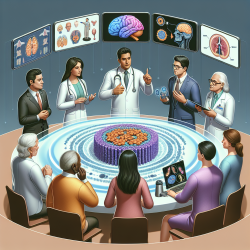Flip Your Skills: Embrace the Flipped Classroom for Better Outcomes
In the ever-evolving field of education, particularly within health sciences, innovative teaching methods are crucial for enhancing student engagement and learning outcomes. The Flipped Classroom model, as explored in the study "Flipping for success: evaluating the effectiveness of a novel teaching approach in a graduate level setting," offers a compelling approach to teaching that can significantly benefit both students and educators.
Understanding the Flipped Classroom
The Flipped Classroom reverses traditional teaching methods by having students engage with lecture material outside of class, typically through pre-recorded videos or readings. Class time is then dedicated to interactive, student-centered learning activities such as discussions, problem-solving, and applied exercises. This model aligns with constructivist and social learning theories, promoting active participation and deeper understanding of course material.
Key Findings from the Study
- 80% of students found the Flipped Classroom to be somewhat or very effective.
- International students rated the model significantly more effective than North American students.
- Students who perceived the Flipped Classroom as effective also reported higher course satisfaction.
- The model provided more opportunities for critical thinking and peer interaction.
Implications for Practitioners
For practitioners in speech-language pathology and other educational fields, the Flipped Classroom offers a framework to enhance student engagement and learning outcomes. By integrating this model, educators can:
- Encourage independent learning and critical thinking.
- Facilitate more interactive and collaborative classroom environments.
- Provide students with the flexibility to learn at their own pace.
- Utilize class time for applied learning and problem-solving activities.
Challenges and Considerations
While the Flipped Classroom has many advantages, it also presents challenges, particularly in technology management. Educators must ensure high-quality video content and provide support for students to engage with the material effectively. Additionally, it's important to create a supportive learning environment that encourages participation and reduces discomfort.
Encouraging Further Research
Given the promising outcomes of the Flipped Classroom model, further research is encouraged to explore its application across different educational settings and disciplines. Practitioners should consider experimenting with this approach and sharing their findings to contribute to the growing body of evidence supporting innovative teaching methods.
To read the original research paper, please follow this link: Flipping for success: evaluating the effectiveness of a novel teaching approach in a graduate level setting.










